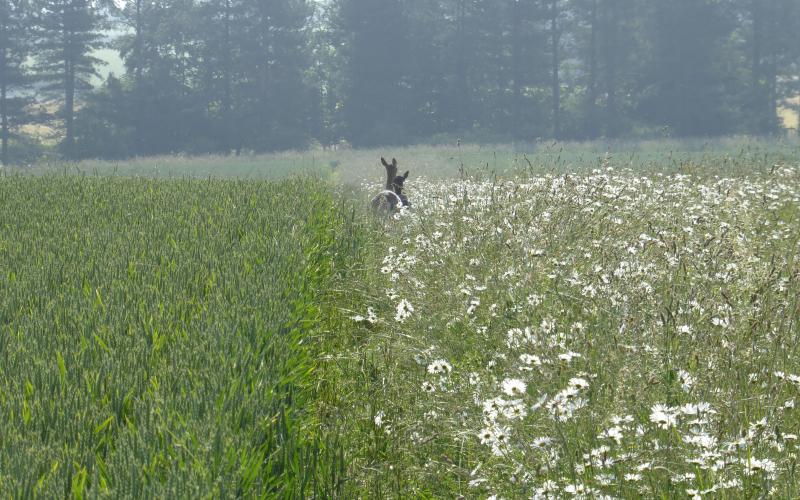
Date of Case Study: 2012
Farm Name: East Hendred Estate
Location: Oxfordshire
Enterprise: Mixed Arable and Sheep
Farm Size: 607 hectares
Sustainable Practices: Controlled traffic farming and considering renewable energy options
Business Benefits: Considerable savings in regular fuel and time costs. In the longer term, improved soil health and reduced inputs/yield increases are expected.
Sustainable Farming Approaches
Farm Manager Julian Gold has adopted Controlled Traffic Farming (CTF) and minimum tillage to reduce emissions, but also as a wise business decision. The technique involves using only the same necessary tracks across fields for land work, planting and harvesting, never driving on the spaces between these tracks. Driving over and deep cultivating fields compacts and disturbs soils, causing Carbon stored in the growing cycle, and crucial nutrients, to be released, depleting the Soil Organic Matter. In total, only 20% of the farm’s field area is driven over. Specialist equipment such as direct drilling and adapted automatic bale collectors are utilised.
Combining cultivating and drilling using one implement for both has saved over £50,000 in capital costs. Meanwhile the reduced fuel use saves around 10 litres per hectare in a typical crop cultivation sequence. The minimum tillage system improves worm count and water drainage, and improves soil structure, and in conjunction with the robust rotations and stale seedbed techniques helps control problem weeds such as Blackgrass. The relatively large average field size has been advantageous for this approach, to set up a 10 metre CTF approach, and smaller farms could set up smaller (6 or 8 metre) widths to benefit from the same advantages. The management of trash and wheelways as a CTF system progresses over time does need an element of hands-on management and this may mean re-examining equipment in the future.
The estate has also adopted robust, wide rotations, which include legumes, to reduce nitrogen use and reduce pests and diseases.
Future Plans: Cover Crops and Renewables
The intention is to bring in cover crops between winter and spring crops – this recycles nutrients, improves soil structure, retains living roots and allows soil biota to thrive, benefitting soil health and resilience. Plans under discussion include examining the numerous coniferous windbreaks on the estate as potential sources for biomass energy supplies in the future.
A re-roofing project on an agricultural building will provide the opportunity to install solar panels, which they plan to install at the same time as the roofing work – a good example of combining necessary work already planned on the farm with opportunities for low carbon diversification.
Carbon Footprint
Due to the size of the arable crop under cultivation, nearly 90% of the farm’s emissions are a result of the agro-chemicals used on crops, the majority (83%) coming from fertilisers. Due to the reduced distance driven each year and working wider and shallower in terms of cultivation as a result of CTF techniques, fuel use is lower than would be expected otherwise, accounting for only around 6% of total emissions.
Livestock emissions are also relatively low at just under 3%, but as the farm has a relatively significant amount of machinery, farm machinery represents nearly half of these emissions (1.4%), with the embodied emissions from materials used on the farm only 0.03%.
In sequestration terms, there are some good size blocks of woodland around the farm, and together these are removing almost four times the annual emissions of the farm’s livestock from the atmosphere each year. The minimum tillage approach will store carbon in future years, contributing to net sequestration. Regular Soil Organic Matter testing is important for monitoring this.
Summary
As part of a pragmatic overall approach, the Estate seeks to minimise artificial, especially finite fossil fuel-based inputs. Soil is also crucial to the approach as any improvements in soil health will further reduce the inputs required, and improve soil robustness and resilience in both wet and dry years. This focus on soil health is crucial for reducing emissions through lower inputs and sequestering carbon through improved soil health and structure. The farm crucially needs to stay profitable and this approach allows for continued profitability while adopting innovative techniques; the considerable savings alone illustrate the strong economic case.



Recent Comments